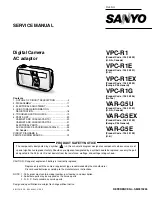
208 Using the FC-FC routing service
5.
Enter the
secModeShow
command to verify that security is disabled.
6.
Enter the
msPlatShow
command to verify that Management Server Platform database is disabled in
the backbone fabric.
If any of the items listed in the prior steps are enabled, you can see the Fabric OS Command Reference
Manual for information on how to disable the option. For information about security, see ”
Configuring
standard security features
” on page 83 and ”
Configuring advanced security
” on page 133.
When it is in strict mode, ACL cannot support Fibre Channel routing in the fabric. Before connecting an
edge fabric to an FC router and before setting up the FC router in the BB, verify that the Fabric Wide
Consistency Policy is not in ‘strict’ mode by issuing the
fddCfg --showall
command.
If the Fabric Wide Consistency Policy has the ‘S’ letter in it in the edge fabric or the BB fabric, do not
connect the edge fabric or the BB to the FC router. See the
Fabric OS Command Reference Manual
for
details.
Assigning backbone fabric IDs
If your configuration has only one backbone fabric, then this task is not required because the backbone
fabric ID in this situation defaults to a value of 1.
All switches in a backbone fabric must have the same backbone fabric ID. You can configure the backbone
fabric ID using the
fcrConfigure
command. The backbone fabric ID is required to be unique from the
perspective of every attached edge fabric. Fabric ID changes made on a switch are not propagated to
other switches in backbone fabric. Rather, the backbone fabric administrator is responsible for making sure
that all switches in the backbone have the same fabric ID. Because fabric IDs are used heavily by the
routing protocol between the Fibre Channel routers, using the wrong fabric ID can affect both
edge-to-edge and backbone-to-edge routing.
In addition to ensuring that the backbone fabric IDs are the same within the same backbone, you need to
make sure that when two different backbones are connected to the same edge fabric, the backbone fabric
IDs are different (but the edge fabric FID should be the same). Configuration of two backbones with the
same backbone fabric ID that are connected to the same edge is invalid. In this configuration, a RAS log
message is displayed warning about fabric ID overlap. However, when two backbone fabrics are not
connected to the same edge, they can have the same backbone fabric ID.
To assign backbone fabric IDs
1.
Log in to the switch or Director.
2.
Enter the
fosConfig
--disable fcr
command to disable the FC-FC Routing Service. See the
Fabric OS Command Reference Manual or the CLI man pages for more information about the
fosConfig
command.
NOTE:
The default state for the FCR is disabled. The
fcrEnable
and
fcrDisable
commands continue
to operate as before, however
fosConfig
is the preferred method for enabling and disabling the FC-FC
Routing (FCR) Service.
3.
Enter the
fcrConfigure
command. At the prompt, enter the fabric ID, or press
Enter
to specify the
default fabric ID (1).
4.
Verify that the fabric ID is different from that set for edge fabrics.
Multiple FC routers attached to the same backbone fabric must have the same backbone fabric ID.
switch:admin_06>
secmodeshow
Secure Mode: DISABLED.
switch:admin_06>
msplatshow
*MS Platform Management Service is NOT enabled.
Summary of Contents for AE370A - Brocade 4Gb SAN Switch 4/12
Page 18: ...18 ...
Page 82: ...82 Managing user accounts ...
Page 102: ...102 Configuring standard security features ...
Page 126: ...126 Maintaining configurations ...
Page 198: ...198 Routing traffic ...
Page 238: ...238 Using the FC FC routing service ...
Page 260: ...260 Administering FICON fabrics ...
Page 280: ...280 Working with diagnostic features ...
Page 332: ...332 Administering Extended Fabrics ...
Page 414: ...398 Configuring the PID format ...
Page 420: ...404 Configuring interoperability mode ...
Page 426: ...410 Understanding legacy password behaviour ...
Page 442: ...426 ...
Page 444: ......
Page 447: ......
















































